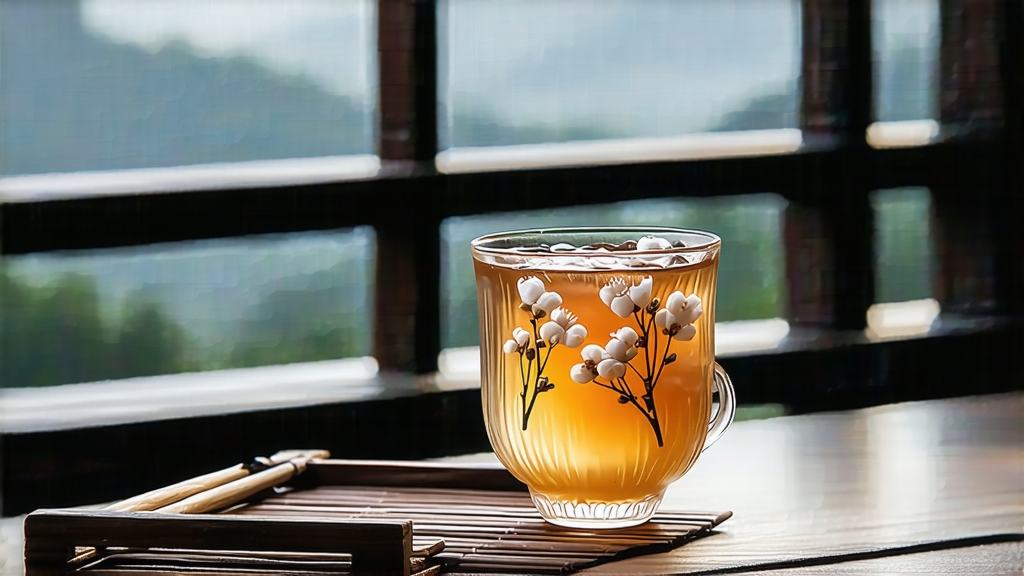
When Chinese tea lovers speak of “white tea,” they are not referring to a pale liquor alone but to an entire philosophy of restraint. Among the six major families of Chinese tea, white tea is the only one that asks the leaf to create its own destiny: no pan-firing, no rolling, no charcoal roasting—only air, time, and the patience of the maker. Within this minimalist universe, Fuding Silver Needle (Bai Hao Yin Zhen) sits at the apex, the single most coveted expression of what a bud can become when nature is allowed to finish what it started.
A Brief Geography of Serenity
Fuding county hugs the northeastern horn of Fujian province, where the East China Sea’s warm vapors meet the granite spines of the Taimu mountain range. The resulting micro-climate—mild winters, fog-draped springs, and an annual rainfall just shy of two meters—creates a natural withering chamber that no factory could ever replicate. The indigenous cultivar, Fuding Da Bai Hao (“Big White Down”), has evolved extra-thick bud scales that store sugars and amino acids, giving Silver Needle its signature sweet creaminess.
From Imperial Tribute to Global Muse
Written references first appear in the 1796 edition of the Fuding County Gazetteer, describing “silver-tipped buds presented to the Jiaqing Emperor.” By the late 1800s, export demand from Hong Kong and Southeast Asia turned the bud into a commodity, yet it remained largely unknown in the West until the 1990s, when studies on white tea’s antioxidant profile catapulted it into wellness circles. Today, tiny villages such as Guan Yang and Dian Tou have become unlikely crossroads where London tea buyers bargain with septuagenarian farmers over baskets of freshly plucked buds.
Harvest: Dawn, Dew, and the One-Bud Rule
Silver Needle is plucked only during a narrow window—roughly fifteen days between mid-March and early April—when the bud reaches 2.5–3 cm but has not yet unfurled into a leaf. Pickers work barefoot to avoid bruising the plant, wearing cotton gloves so no skin oil alters the downy surface. A skilled hand can gather just 500 g of buds in a full morning; it takes 30,000 buds to make one kilo of finished tea.
Withering: The Art of Doing Nothing
The buds are laid in single layers on bamboo trays stacked like screens in a quiet loft. For 36–48 hours they rest, losing moisture in a gentle sigh while enzymatic oxidation hovers at 5–8 percent—too slight to be called oxidation, too great to be called mere drying. Masters gauge readiness not by timer but by touch: the bud must feel “like a silk thread pulled from a cocoon,” pliable enough to bend without snapping, yet dry enough to whisper when shaken. On humid days, charcoal pits of local hardwood add a whisper of warmth beneath the trays, but the fire is so restrained that a sheet of paper placed on the pit should only curl, never scorch.
Sorting and Firing: A Whisper of Closure
After withering, buds are hand-sorted under full-spectrum light; any speck of green leaf or purple bruise is removed. A final 15-minute “baking” at 60 °C halts residual enzymes, yet the temperature is kept below the threshold that would generate roasted flavors. The finished aroma should recall fresh wheat, not toast.
The Look, the Aroma, the Taste
Dry buds resemble miniature crescent moons, silvery-white on the surface, dove-grey at the base where the down is thinnest. When placed in a pre-warmed gaiwan, they exude a perfume of linden honey, wet hay, and a trace of cucumber skin. Upon infusion, the liquor is the color of pale chardonnay, almost transparent at the edges. The first sip lands like cool spring water, then expands into notes of ripe honeydew, fresh cream, and a fleeting hint of pine pollen. The aftert lingers for minutes, a soft umami echo that makes the mouth water rather than pucker.
Water, Vessel, and Temperature: A Minimalist Ritual
Silver Needle is delicate, but not timid. Use hard or chlorinated water and it will collapse into flat sweetness; use water that is too cool and it will remain mute. The sweet spot is